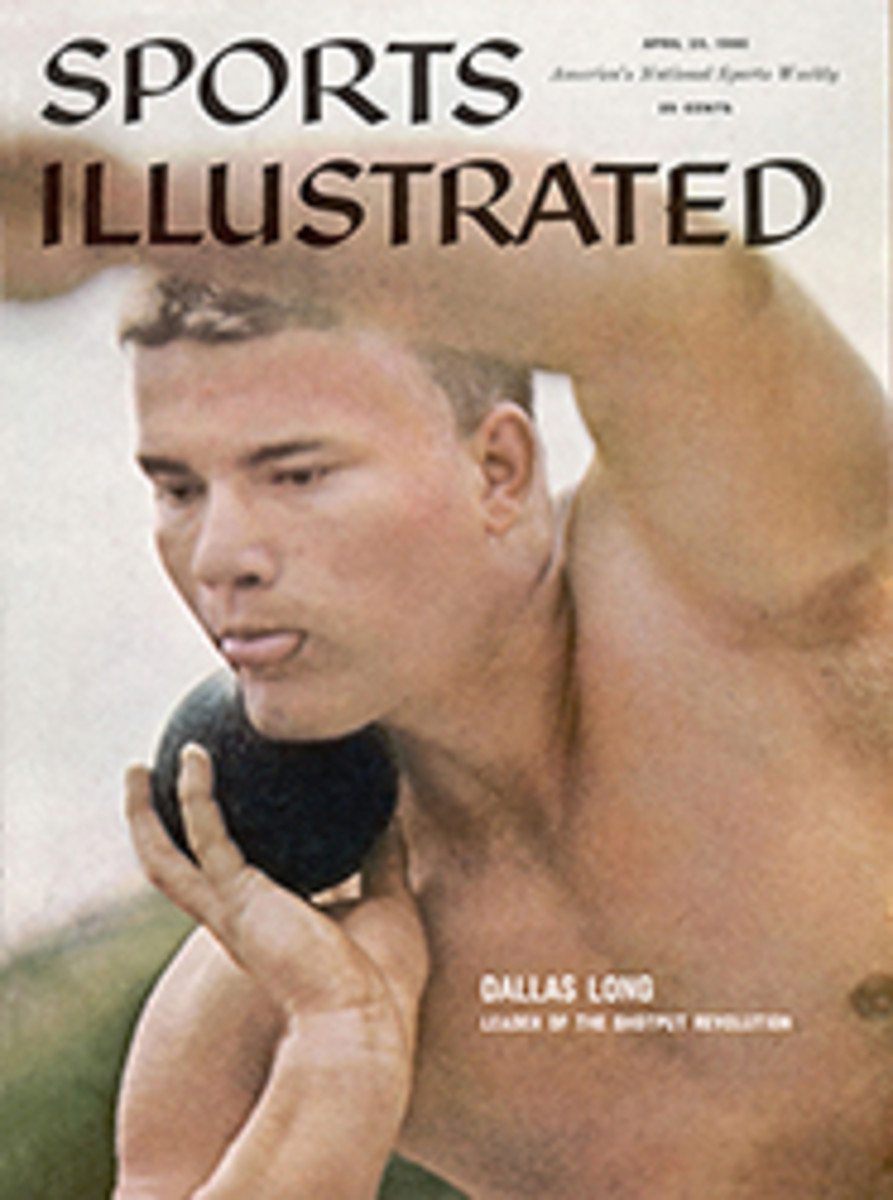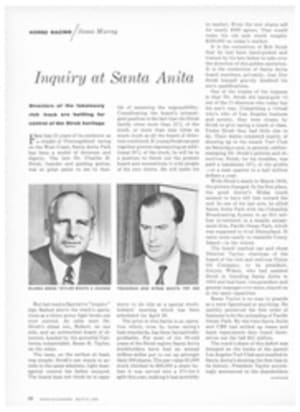
THE END OF COLLEGE BOXING
The tragedies of sport, whether they occur in football, sports car racing or most other hazardous games, grieve families, sadden fans and stir up resentment against the hazards. When a tragedy occurs in boxing, the resentment is against the sport itself.
Now a tragedy of college boxing appears to have doomed the sport.
Charlie Mohr, a personable, intelligent, deeply religious and in all ways estimable young man, the very symbol of what a college athlete ought to be, collapsed in his dressing room during the finals of this year's 23rd annual National Collegiate Athletic Association tournament. He had just lost in what was to have been, win or lose, his last boxing match. He had lost to a friend with whom he planned to spend part of his Easter vacation. A star member of the University of Wisconsin boxing team, which was host to the tournament, Mohr was found to have suffered a brain hemorrhage. At University Hospitals a team of top surgeons, led by the renowned neurosurgeon Dr. Manucher Javid, operated on his brain. They stopped the bleeding, but through long days that followed Mohr remained unconscious, an indication that survival was a dubious prospect.
Last Sunday morning, eight days after the bout, Charlie Mohr died. The injury had affected centers deep in the brain which control the heart, blood pressure and respiration.
From president to freshman coed, this death of a campus hero shocked the University of Wisconsin, the coaches and boxers assembled from 16 other schools, and the city of Madison's unique devotees of the college sport. Largely because of its ardent townie fans, Wisconsin has set several attendance records for the NCAA meets, seven of which have now been held there. There were 10,322 spectators (no record) at the 1960 finals on the night Charlie Mohr was injured.
Today's NCAA rules and practices give college boxers the fullest protection. The 12-ounce gloves (eight and six ounces are standard in professional boxing), the padded headgear and the thick-felted canvas flooring are sufficient guarantees against all but the most extraordinary cases of serious injury. Perhaps even more important than protective equipment, college referees stop bouts as soon as a boxer seems to be definitely outclassed, let alone in danger of a severe beating. Forty-eight bouts were fought during the three-day tournament at Wisconsin. Not a single boxer, not even Charlie Mohr, was knocked unconscious in the ring. Eleven bouts ended in what professional boxing would score as technical knockouts, but these were bouts in which the referee intervened as a matter of prudence when a boxer seemed to have no chance to win.
Referee John O'Donnell so intervened, and quickly, as it became apparent in the second round that Stu Bartell of San Jose State, who had once beaten and once lost to Mohr in dual meets, was sure to win again. O'Donnell's decision came shortly after Mohr was knocked to the canvas.
"It was not a good punch," a deeply depressed O'Donnell said. "Just a long right. He was up at the count of two, which is a good sign. While I was giving him the nine-count [mandatory] I looked in his eyes and they were clear. I asked if he was all right and he said, 'Yes.' So I let the fight go on. He moved around briskly for maybe 30 seconds, so he did not seem hurt, but as soon as the other fellow started punching him I moved in and stopped it. I caught the last punch on my shoulder."
After a rest in his corner, while Bar-tell was proclaimed 165-pound NCAA champion, Mohr left the ring and walked to his dressing room. He told his brother his head hurt. He lay down there and was checked by Dr. John Flinn, Wisconsin team physician and director of student health. Dr. Flinn suspected a possible concussion and ordered Mohr to remain lying down. In nine minutes Mohr was in coma and convulsions. The doctors ordered him to University Hospitals for an operation that took three hours. To reduce brain swelling Dr. Javid used a urea-injection method he had introduced for lowering brain and eye pressure. The swelling was reduced, the hemorrhage was stopped but Mohr did not otherwise respond.
The operation did not disclose how a healthy brain could have been so grievously injured by the blows college boxers are able to inflict through padded gloves striking a padded headgear. He had been hit by a right hand, the brain damage indicated, on the left frontal area (in the vicinity of the left temple), where the headgear is supposed to cushion a blow. Indeed, some doctors at first suspected that Mohr may have had a hitherto undetectable weakness of a brain artery, an aneurysm. An aneurysm may be compared to the similar weakness in an automobile's inner tube just before it blows out. Without certainty, it seemed possible that a blood vessel in Charlie Mohr's brain had burst and that if it had been a healthy artery it would not have burst under the impact of Stu Bartell's heavily padded fist against a padded headgear. But the brain is a delicate and still mysterious organ.
If the aneurysm theory is correct, Charlie Mohr was not a victim of college boxing. Young men so afflicted may die suddenly and unpredictably in their 20s or 30s. They are victims of premature cerebral hemorrhages that most often occur in much older men. But Dr. Javid felt that the aneurysm suggestion was not necessary to explain what had happened. He reported that Mohr had suffered "a very serious head injury."
Serious injury or death in college boxing is most unusual. A year ago Curtis Raymond Lyons, a Texas A&M sophomore, died after a bout with Fred White at Sam Houston College. Prior to that there had not been a death in the sport since 1945, when Dixon Walker of the University of Maryland died after a bout at Catholic University with CU's Gus Gersin. But the 1945 bout was not conducted under the more recent and more protective NCAA rules.
Whatever the cause in the Mohr instance, aneurysm and innocence for college boxing or not, coaches foresaw the early end of the sport.
It has been declining anyhow, despite recent sporadic signs of possible resurgence. Eastern colleges, once the stronghold of the sport, have just about abandoned it except for intramural matches. Now the center of interest is in the West. Seven California colleges were entered in this tournament. Only Syracuse was represented from the East.
"This will just about do it." Coach Milton (Dubby) Holt of Idaho State said. "I think college boxing is now finished."
Henry Elespuru, Sacramento State coach, put it succinctly. "This will kill college boxing," he said.
Both men are aware that college boxing has been confused in many academic minds with professional prizefighting, as college wrestling sometimes has been confused with professional wrestling. Its aura is not that of tennis, or crew or football.
But college boxers have loved it and have benefited by it, among them Charlie Mohr, a shy, introverted young man whose family noted that the sport and his success in it had made him much more outgoing. It may possibly survive this blow. Charlie's father, Charles Mohr Sr., a gentleman of remarkable understanding and forbearance, made it clear, once he had recovered from the first shock of his son's accident, that he does not blame the sport and hopes others will not. But many will.
PHOTO
LAST PHOTO SHOWS BOXER MOHR, OPPONENT STU BARTELL IN PADDED HEADGEAR, HEAVY GLOVES USED BY COLLEGIANS

